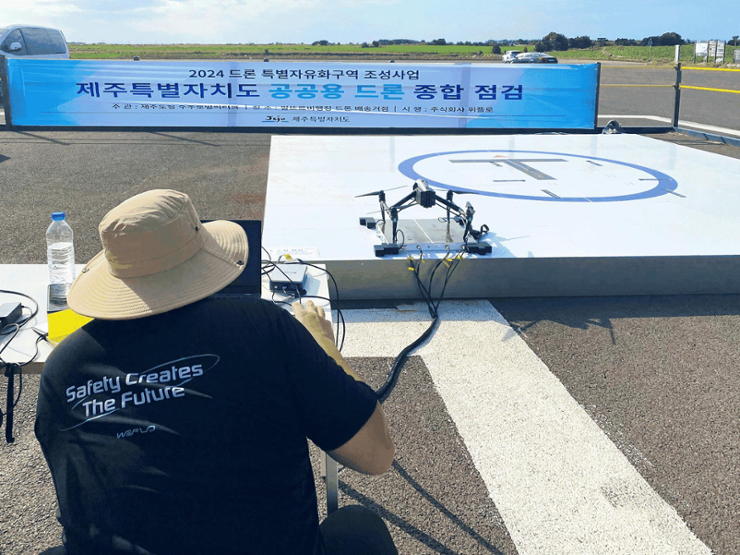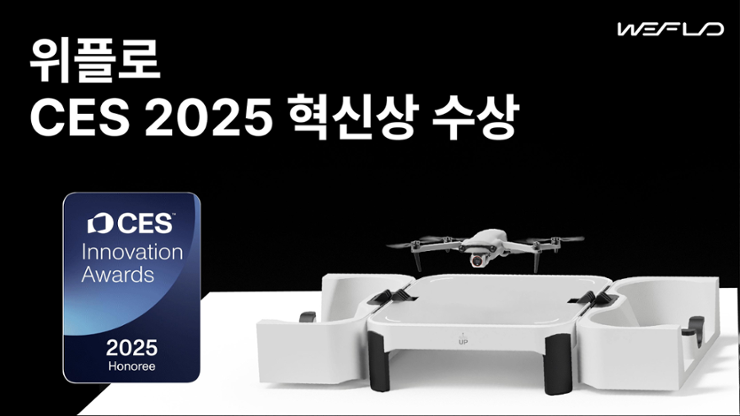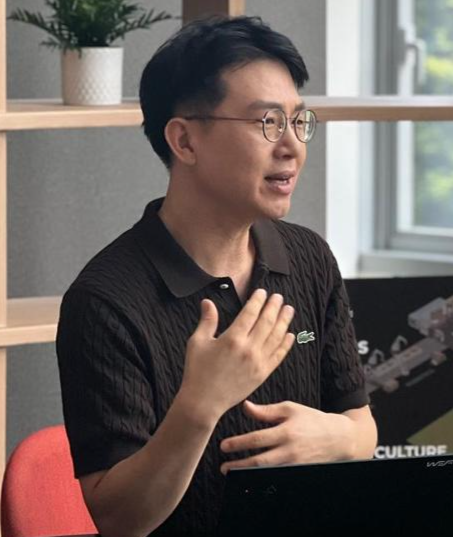
Weflo’s technology, applicable to both drones and air taxis, centers on a "fusion sensor." This sensor scans the machines’ driving motor, electronic speed controller, and blades, checking for irregularities based on electromagnetic waves, noise, and vibration. By analyzing the results of the scan, which takes just seconds, the system can detect issues such as worn-out bearings, broken coils, or twisted axles. According to Kim, the predictive maintenance system boasts an accuracy rate of at least 98 percent.
Checking for mechanical defects in these machines has traditionally been the job of human experts.
“They would put their hands on the blade and give it a few spins. Depending on how that spinning feels like, they would give out a verdict. It is same with other critical parts of drones or air taxis. They would take a close look but it all depends on the technician’s job experience and physical condition that day,” Kim said in his interview with The Korea Times at GroundX which is Weflo’s research and development facility in Jeonju.
“We cannot rely on human decisions. What if that technician was sick that day? Would his decision be trustworthy? What if there were like a hundred drones to inspect? That will take hours or even days.”
The contactless technology can take various forms, from a portable tripod-like scanner for drones (called Portable Verti-Pit) to a built-in scanner inside a drone maintenance pad (Verti-Pit), and even a scanner for slowly-moving automobiles in parking lots (HUMs). At a vertiport, which serves as a platform for vertical takeoff and landing aircraft (VTOL), a dedicated maintenance section can scan air taxis shortly before or after each flight. Weflo refers to this as the Intelligent AAM Inspection (IAI) Platform, which the company is currently placing its biggest bet on.

At GroundX, four Hums are currently being tested in an outdoor parking lot, scanning vehicles in motion — such as during a carwash — for defects across the body and tires. The results are simultaneously transmitted to computers housed in a container booth next to the cameras for analysis and monitoring.
Weflo has so far progressed furthest with drones. Under the project commissioned this year by the Ministry of Land, Infrastructure and Transport, the company is building Verti-Pit maintenance pads for a network of delivery drone platforms nationwide. The drone network is scheduled for commercialization in 2027.
Nine cities and counties, including Incheon, Busan, Jeju Island, and Seongnam in Gyeonggi Province, are part of the project. The network, which will connect both within and outside these areas, will consist of vertiports, maintenance/command centers, and delivery destinations. In total, around 150 infrastructure elements are planned, with 100 already completed.
While different consortiums handle the construction of infrastructure, logistics operations, and drone control systems for the project, Weflo is solely responsible for drone maintenance.
“Once a drone parks itself atop Verti-Pit, fusion sensors installed inside the pad scans for possible defects,” Kim said, showing Verti-Pit's prototype at GroundX. While the pad scans the drone with all four blades spinning at full-speed, sensor-connected computers show uptick movements indicating the flyer’s condition.
“Each pad is an assembled module. We can adjust each pad’s size and how many or where exactly we want fusion sensors inside the pad depending on which drone to inspect.”
IAI
Weflo’s technologies culminate in the IAI Platform, currently a concept model that specializes in inspecting air taxis between flights. Kim promoted the platform at the Air Taxi World Congress in London earlier this month. He highlighted that the platform would enable vertiport operators to reduce pre-flight inspection time, ultimately shortening turnaround time for each flight and allowing for more air taxis to be operated. Airlines can also implement the platform in their hangars for more precise aircraft inspections, while air taxi manufacturers could introduce it to their end-of-line (EOL) process to significantly reduce plane testing time, he added.
“While the IAI is still in the design phase, it shares its core technology with Verti-Pit. I hope that the transport ministry's delivery drone network will eventually expand to include the IAI feature as well,” Kim anticipated.
“For air taxi passengers, the improved maintenance will save enough time to ensure no wait for their flight.”

Kim targets the United States as Weflo’s largest market for IAI. Most globally renowned companies specializing in the AAM industry, such as Joby Aviation and Archer Aviation, are based there. Europe, on the other hand, has recently witnessed many companies in the industry going bankrupt. Kim believes that his company must make a breakthrough in the U.S. to effectively showcase its technological capabilities.
In November, Weflo established its American subsidiary in Silicon Valley. The company is also currently engaged in "working groups" with the Georgia Department of Transportation (GDOT) and the National Aeronautics and Space Administration (NASA). Within these groups, Weflo has proposed ideas — including those involving the IAI platform — to advance the global AAM industry. U.S. counterparts, along with the Federal Aviation Administration (FAA), are now considering developing Weflo's proposals into official regulations.
"Georgia is witnessing the most active AAM industry in the U.S., so we have been focusing our efforts there. Next year, we plan to expand our influence and impress other U.S. states as well," Kim said.
“AAM planes, each costing hundreds of billions of won to build, must find ways to increase revenues as a form of public transit. What we (the working groups) have been discussing is how to save time, workforce, and costs when operating AAM for public passengers and determining what rate their service fare should be set at. I have been persuading them that IAI will help launch such services at a commercially viable level.”
Kim plans to further develop Weflo’s AAM maintenance technologies by making them applicable to a wider range of aircraft and equipment, including medium- to large-sized drones and electric VTOLs. The company is currently working to sell its technologies to Korean drone manufacturers so they can integrate the system into their EOL processes. According to Kim, this will save these companies time and effort by eliminating the need for separate flight tests.
“We have seen a series of disasters caused by electric vehicles' lithium battery explosions this year, raising concerns over the vehicles and increasing awareness of the batteries’ safety,” Kim said. “These incidents have underscored the importance of pre-flight inspections for drones and air taxis. I believe this will present an opportunity for our company to highlight our technologies.”

